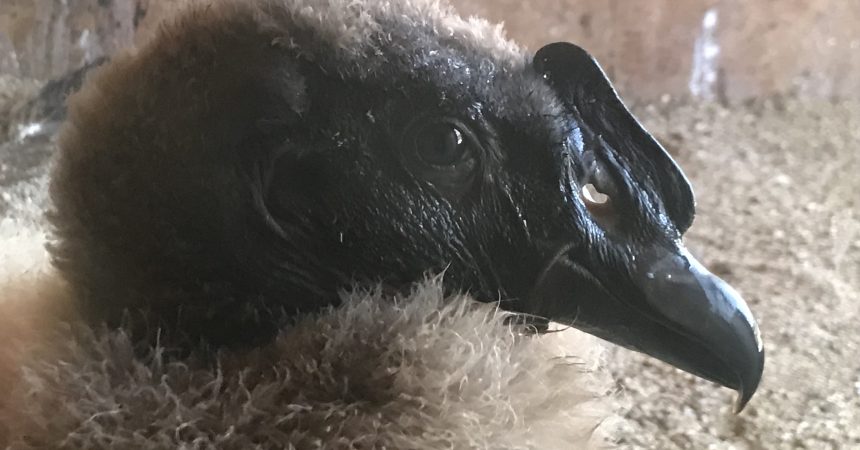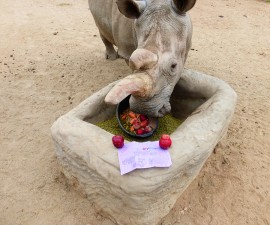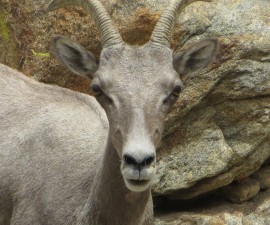The San Diego Zoo Safari Park will be hosting a Vulture Awareness weekend September 1–3 to celebrate International Vulture Awareness Days. In the run-up to this fun weekend, we’re sharing insight and stories from Park keepers that work with, understand, and admire vultures.
Every spring at the San Diego Zoo Safari Park’s Condor Breeding Facility is an exciting time—it’s hatching season. This past spring was extra special, because in addition to our California condor chicks, we welcomed our first Andean condor chick in nine years!
Andean condors are the largest species of New World vulture (family Cathartidae) and are the closest living relatives to California condors. They are found in patchy distributions throughout the Andes Mountains, from Colombia to southern Chile and Argentina. They are bigger than California condors, weighing up to 33 pounds and having a wingspan of up to 10.5 feet.
Our Andean condor pair, male Braulio and female Carlotta, live in our off-exhibit breeding facility alongside our California condor pairs. It is a quiet and secluded place where the birds can focus on developing a pair bond and establishing a nest. Braulio, a very handsome and experienced fellow, has bred with two other females prior to being paired with Carlotta.
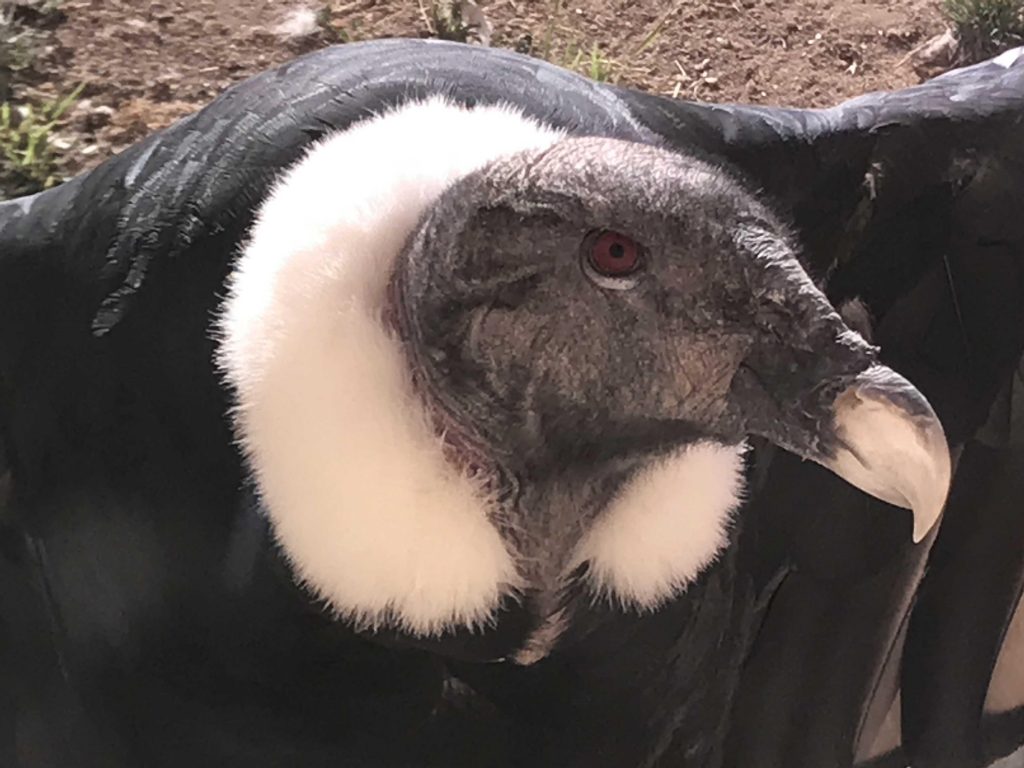
Carlotta
Carlotta had never even laid an egg before meeting Braulio. For most of her life, she lived with another female. There have been a few attempts at pairing her with other males, but she was very timid and was even attacked by a couple of them. Consequently, her family was very underrepresented in the North American zoo population. The Andean Condor Species Survival Plan coordinator recommended sending her to the Safari Park to be paired with Braulio. At first she was scared of him, and he would sometimes act aggressively toward her, but after a very gradual introduction and several adjustments in our husbandry protocols, Carlotta started to spend more time with Braulio. It took 4.5 years, but they finally started to establish a pair bond!
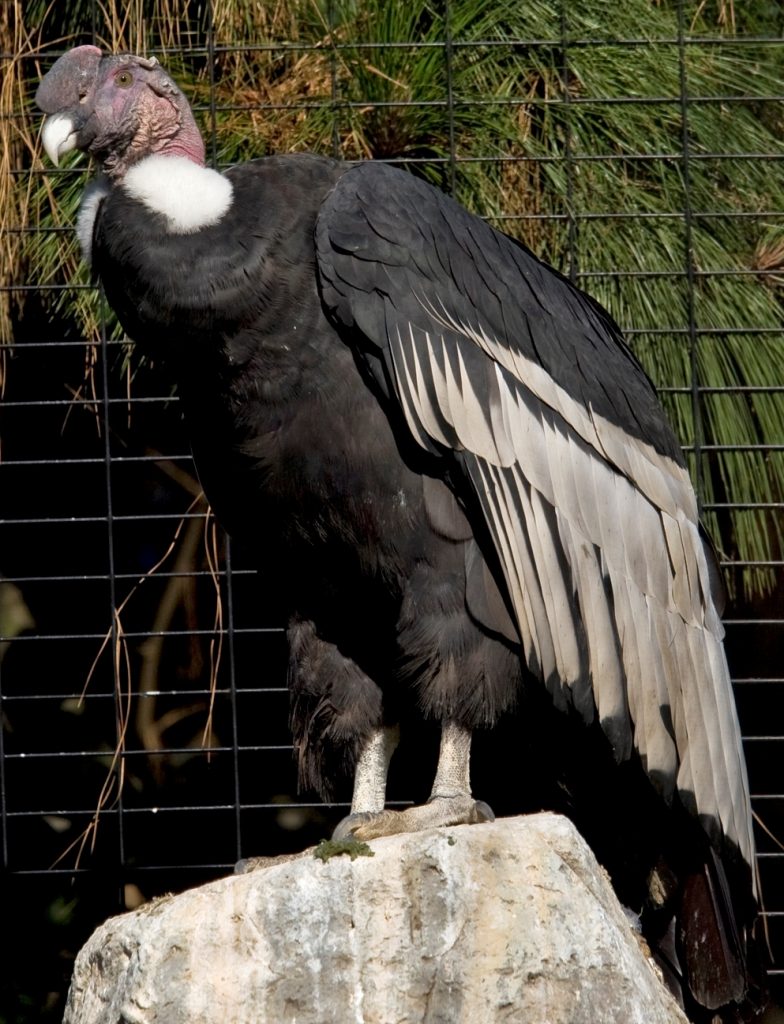
Braulio
In 2017, shortly after they started to spend time together, Carlotta laid her first egg ever—at the age of 31, which is much later than most other females (Andean condors are mature at 9 to 10 years of age). That egg had poor shell quality and was infertile, but Braulio and Carlotta continued to positively interact throughout the year.
Before dawn, on March 6, 2018, Carlotta laid another egg. This time, the shell looked perfect. As a precaution, due to their inexperience as a pair, we moved the egg to our artificial incubator and gave them a fake egg to sit on for practice. After a few days of incubation, we were able to determine that Carlotta’s egg was fertile!
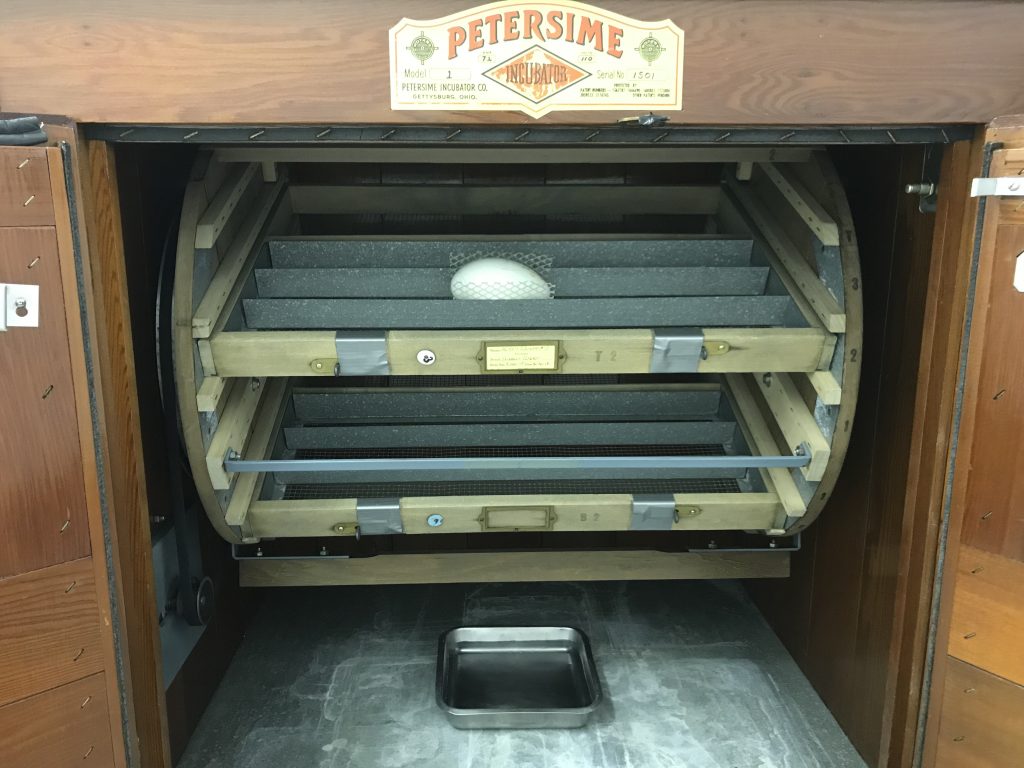
Our incubator is adjustable to allow us to keep the egg at just the right temperature and humidity for each specific species of bird we might use it for.
A few days later, Carlotta lost interest in the nest, while Braulio did all of the incubation. This was not a safe situation for us to return the egg to them, so we decided that if the egg hatched, the chick would need to be puppet-reared.
After 59 days of incubation, the egg hatched, resulting in a healthy male chick! Andean condors are sexually dimorphic—the males and females look different—so we are able to tell the sex right after they hatch. Males have a fleshy ridge above their beak, called a caruncle; females lack this. The chick was strong, healthy, and beautiful.
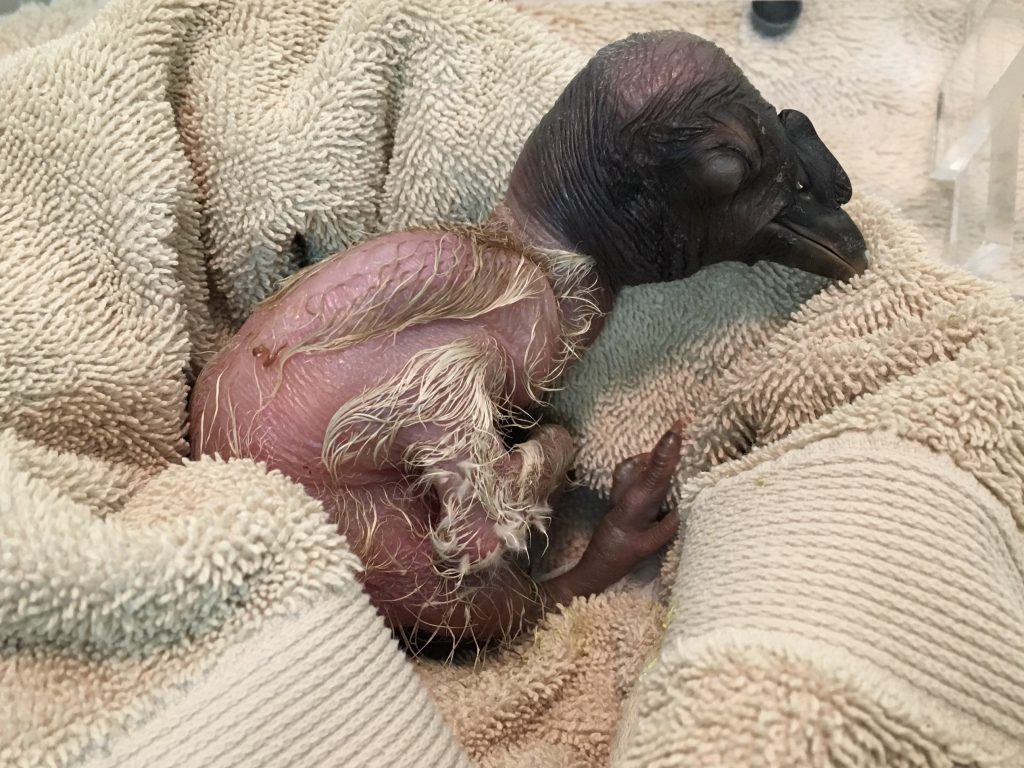
Day 1: notice the fleshy caruncle, the sign of a male condor.
We named him Chimborazo, after the highest peak in Ecuador.
He weighed about 7 ounces (200 grams) when he hatched, and for his first 30 days, Chimborazo was raised on a steady diet of mice prepared different ways as he got bigger. After Day 30, when he weighed 4 pounds, 13 ounces (2.2 kilograms), we moved him to a bigger area where he could look out at Braulio and Carlotta. We still used the puppet to feed him, but he could see other birds to start the socialization process. Now he receives a diet of beef spleen, ground meat, trout, and rats.
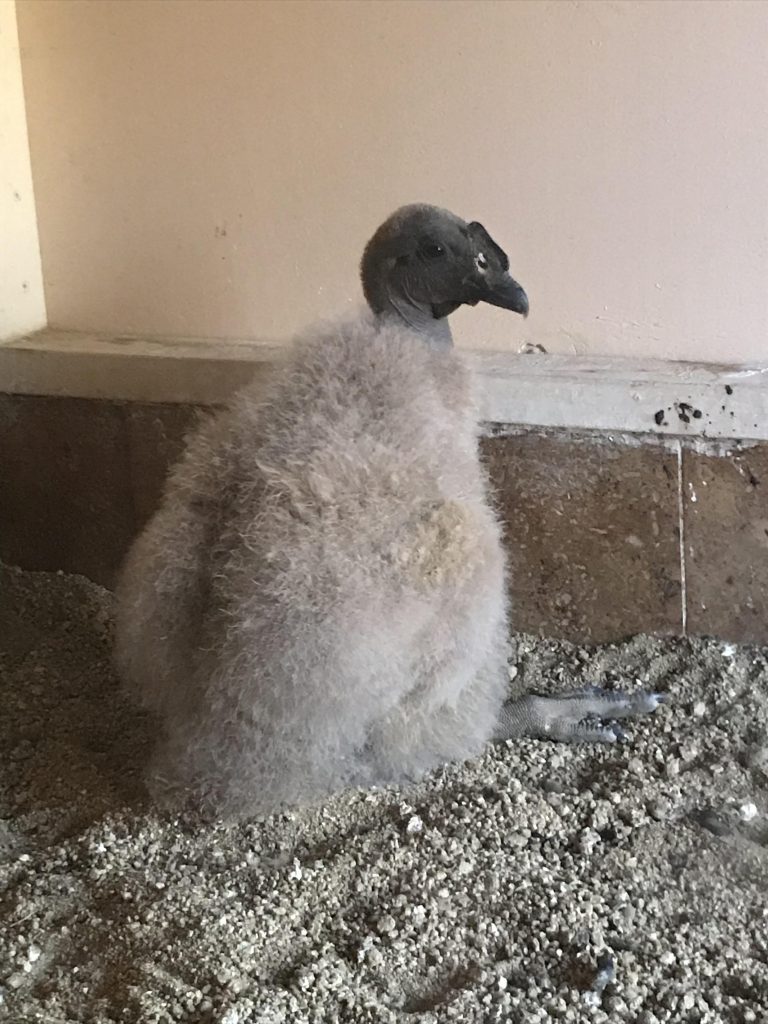
Chimborazo at 41 days old.
Andean condors fledge, or leave the nest, at about six months of age, so Chimborazo still has a couple more months before he can fly. Although he weighs close to 18 pounds (8 kilograms), he is still covered mostly in fluffy down; his feathers are just starting to fill in. His beautiful black skin, shiny eyes, and soft, downy feathers—not to mention his happy, hoppy demeanor—have endeared him to all of his keepers!
Even though Braulio, Carlotta, and Chimborazo are not available to visit at the Safari Park, you can see Andean condors at the San Diego Zoo. Stop by the Park for International Vulture Awareness Days—September 1–3—and discover the magnificence, beauty, and importance of these and other types of vultures!
Ron Webb is a senior keeper at the San Diego Zoo Safari Park. Read his previous blog, One Step Closer to Fledging.

